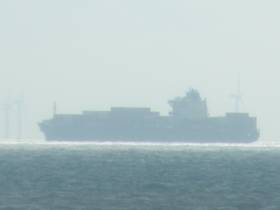Displaying items by tag: USChina
Trade War: US-China Prompts Major Shifts in Goods Flows
The trade war between the US and China is prompting major shifts in goods flows, impacting all modes of transport, according to a number of new studies into the impact of trade tariffs.
As Lloyd’s Loading List reports Europe has multiple opportunities to benefit from the conflict even as it suffers from lower growth forecasts, not least by negotiating better trade arrangements and economic access with China.
According to the United Nations Conference on Trade and Development (UNCTAD), more than 80% of the trade hit by US and Chinese tariffs will be picked up by other countries – with the EU set to make the biggest gains.
The study estimates that of the $250 billion in Chinese exports subject so far to US tariffs, about 82% will be captured by firms in other countries, about 12% will be retained by Chinese firms, and only about 6% will be captured by US firms. Similarly, of the approximately $85 billion in US exports subject to China’s tariffs, about 85% will be captured by firms in other countries.
“Countries that are expected to benefit the most from US-China tensions are those which are more competitive and have the economic capacity to replace US and Chinese firms,” said the report.
European Union exports are forecast to increase the most, capturing about $70 billion of US-China bilateral trade - $50 billion of Chinese exports to the United States, and $20 billion of US exports to China. Japan, Mexico and Canada will each capture more than $20 billion.
The UNCTAD findings are partially supported by a report from Nomura released last week, although it expects countries in Asia to be the biggest beneficiaries of product or sourcing substitution.
For more on the state of global trading relationships, click here.
Tradewinds: Shippers Brace for Further US-China Tariffs
In the US importers and their logistics providers are preparing for further US-China tariffs and a possible fresh rush to front-load deliveries to beat the next tariff deadline, after the US confirmed its intention to impose 25% duties on further US$300 billion of products imported annually from China.
As Lloyd's Loading List reports, The Office of the United States Trade Representative (USTR) has called for comments by 17 June on its new list of products. It said: “The proposed modification is to take further action in the form of an additional ad valorem duty of up to 25% on products of China with an annual trade value of approximately $300 billion.”
Representatives of US importers warned that it was impossible for companies to switch their sourcing of products from China to other countries in the short term, with sourcing decisions taking time to make and with other countries lacking the necessary manufacturing and logistics capacity that China has.
Matthew Shay, president and CEO of the National Retail Federation (NRF), said retailers were considering a “longer-term play about diversifying the supply chain and maybe moving some of the supply capacity in other places”. But he added: “The issue is there’s no new China.
For further analysis of the US-China tariff click here and for a study on its impact on the US.





























































